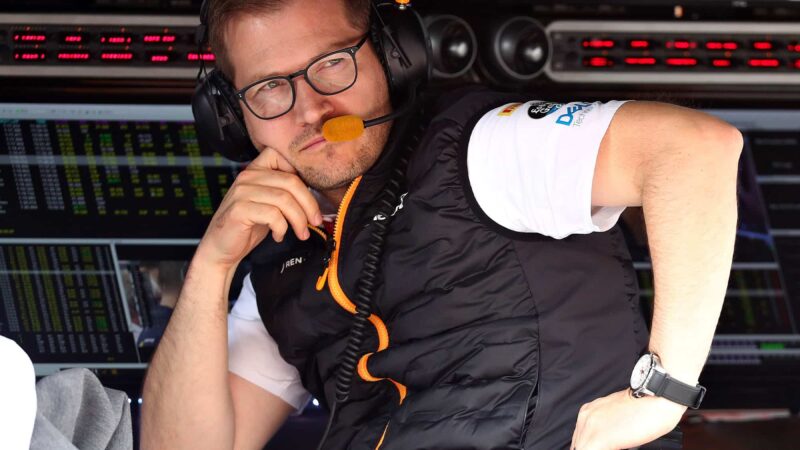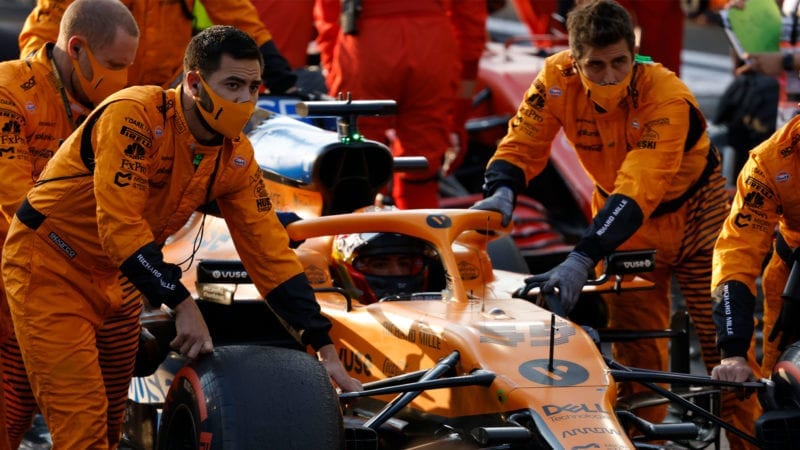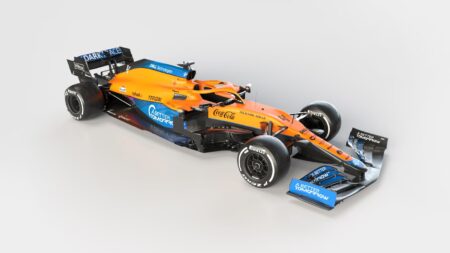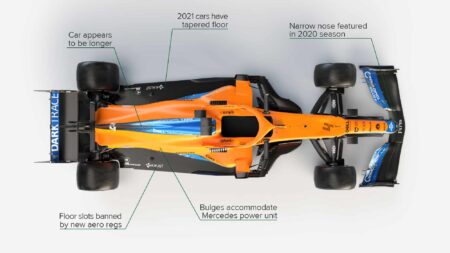“We’re trying to cut costs everywhere, basically,” James explained. “To put things in sea freight, it pays for itself within a year. So there’s no ongoing freight costs, airfare costs, it all goes in the sea freight. It’s all cost-effective, it’s the way forward.”
Its this kind of counterintuitive thinking that can offer teams an advantage in the new age of Formula 1’s budget cap.
The more that they spend on tools and freight, the less they spend on maiing cars go quicker.
The budget cap limits F1 team’s annual spending to $145m for 2020. It covers all costs of running the teams with the exception of marketing costs, driver salaries and the salaries of the three highest earners at each team.
SO there’s an incentive to save money at the edges so that as much development as possible can be preserved.
“We were spending beyond the cap previously, so we’ve had to make some adjustments.,” said McLaren’s CEO Zak Brown in an interview ahead of this year’s car launch. “But I think the discrepancies, if you like, will be pretty nominal.

Seidl says the budget cap is the only for McLaren to stay in F1
Lars Baron/Getty Images
“What’s most important is Andreas and James and the team have the full resources to run at the cap. Spending at the cap focused on total performance is the goal.”
Although Ferrari often appears determined to disprove the rule, performance is inextricably linked to budget in Formula 1, and its what makes the budget cap vital, said McLaren team principal Andreas Seidl.
Without it, the future of McLaren would be in doubt, he suggested. “It’s obviously a big and important topic for us at McLaren,” he said.
“It’s a topic that we were supportive of quite a lot, because it makes sure that we can be in Formula 1 in the future in a sustainable way, but also in a competitive way.”



